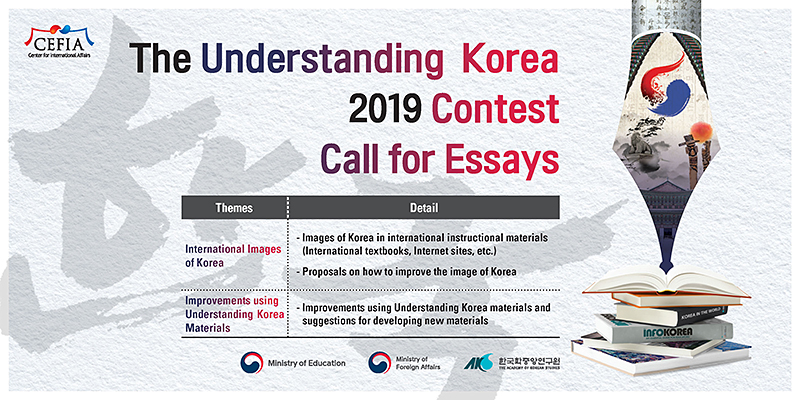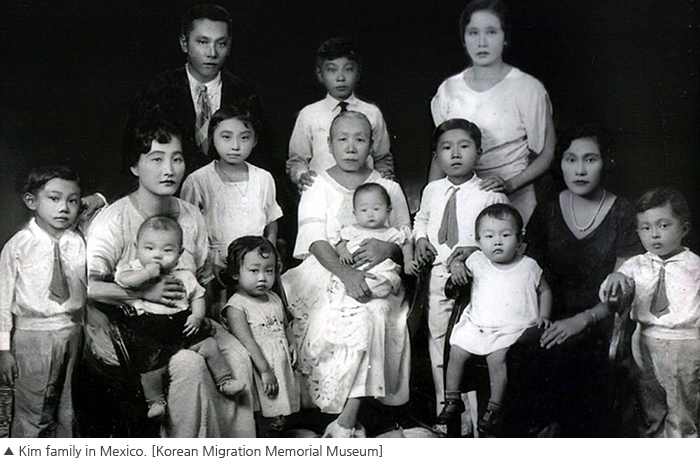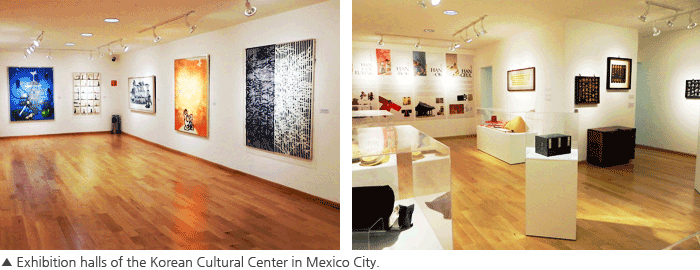Essay Contest Result

Korea A New Story
Background of the relationship between Korea and Mexico
Over time, the relationship between the cultures of Korea and Mexico has been gradually built, with the arrival of Korean emigrants at different times and in different places of the national territory. Currently, mutual knowledge has been strengthened and enriched due to the economic, social and cultural interaction between both countries. Coexistence between Koreans and Mexicans began in the last century, but it is necessary to find new ways to deepen mutual knowledge to contribute to a stronger interaction between the two nations.
The encounter between the peoples of Korea and Mexico is based on the first migration of 1,033 Koreans in 1905, who arrived in the Yucatan Peninsula to work in the Haciendas that produced henequen, the so-called Green gold, in the era of Porfirio Díaz. Koreans contributed to the increase in henequen production, as well as the introduction of new cultural manifestations such as taekwondo. Initially, it would be only four years of work, but for different reasons, which were complicated by the beginning of the armed movement of the Mexican Revolution, they could no longer return to their country.

The first Koreans in Mexico stayed, and their descendants were integrated into Mexican society as can be seen in the Korean Migration Memorial Museum, in Merida, Yucatan. Some of them migrated to Mexico City and others to Tijuana; since then, the first settlements of Koreans emerged, which grew with the arrival of new waves of migrants who registered with greater numbers since the sixties in the twentieth century. It is in 1962 when diplomatic relations between the two countries are established. In the 1980s, new Korean migrants were received in Mexico City, some from Argentina and Guatemala, who due to economic and political problems in these countries were forced to migrate in search of better living conditions. Thus, important communities of Koreans emerged in places such as Zona Rosa, Colonia Juárez, Centro Histórico, and Polanco, among others.
Interactions between Korea and Mexico
During the one hundred and fourteen years since the arrival of the first Korean migrants to Mexican territory, there has been a gradual increase in Korean migration. In the 2010 population census, 3,960 Koreans living in Mexico were registered, and even when the number is lower concerning the total number of migrants from other countries, the increase is significant and important in the political, economic, educational fields, cultural and tourist. In recent decades, Korea's investments in the country have increased; more than 1,900 Korean companies invest in Mexico and brands such as Samsung, LG, Hyundai, KIA, and Daewoo are installed in the cities of Monterrey, Puebla, Tijuana, Guadalajara, Querétaro, Tampico, and Celaya.
In this context, the presence of Korean culture in Mexico has been strengthened by educational and cultural activities that take place in different entities of the country, such as the bachelor’s degree of Korean Studies at the Autonomous University of Nayarit, as well as the activities of the Korean communities that are held in several cities and events organized by the Korean Embassy in Mexico. In particular, at the Korean Cultural Center in Mexico City, activities are carried out to learn Korean culture, language, calligraphy, and food, which contributes to the knowledge of this nation.

The economic and cultural interaction has boosted tourism which has increased continuously in recent years; in 2018, they were registered in Mexico, 130,000 Korean tourists. But the Korean Wave (Hallyu), with various contents in music, movies, melodramas, and YouTubers, has expanded the experience of Koreans in the country and the world, in the different currents of culture Korean: K-Culture, K-Drama, K-Pop, and K-Sports. Thus, the experiences and anecdotes lived by Koreans in Mexico are many and enriching in different social and cultural spheres, from the perspective of a friendly coexistence between both countries.
The activities and projects that have been carried out between the governments of Korea and Mexico range from financial investments, to the training of new professionals in various disciplines. However, despite the communication and interaction that exists today between Koreans and Mexicans, in both countries the geography, history, culture and contemporary ways of life of each one is not known in depth. What can be done to deepen the knowledge and appreciation of Korean culture in Mexico?
Proposals to deepen the knowledge of Korean culture in Mexico
One of the proposals that could contribute to strengthening Korea's knowledge in Mexico is the organization of a Magna Exhibition of Korean Culture at the National Museum of Anthropology, which could present a selection of the main expressions of geography, history, anthropology, and Korean art, from the first settlers, to the great historical moments that shaped the contemporary culture of this nation, with its own characteristics among Asian cultures.
We Mexicans like to know new cultures and Korea has a lot to offer to enrich universal culture, this knowledge would increase interest in knowing more about the country, as well as mutual understanding and the development of new joint projects. Although there have been small expositions of Korean art in Mexico, a vision is needed that fully covers the development of Korean culture throughout its history.
Another proposal is to continue communication with the Ministry of Public Education of Mexico to contribute to the updating of the information contained in educational materials about Korea's knowledge about geography, history, culture, and position in the world. In Mexico, during the development of the twentieth century, the information that was available and disseminated in the basic education textbooks was scarce and not updated. An example that attracted attention was the photograph of a Korean peasant woman as a representative image of the country's population. This information was in the textbooks until the beginning of the 21st century but that did not correspond to the current population of Korea, which transformed, like a few countries in recent decades, from the development of education, the economy, and technology. A new story would have been told about this millenary country, with a culture that sustains the development and growth of modern, innovative society and is an important reference for many changes in contemporary societies.
Finally, it is proposed to develop an editorial line in Spanish for children and young people with Korean and Mexican personages that are endearing to both countries, that could tell stories with universal values from the context of their culture and history, as well as science fiction and suspense, with stories typical of Korean culture of all time.
During the first two decades of the 21st century, a new vision of Korea has built, as a nation that has worked hard in the development of the country, stands out as one of the best educational systems, is a strong economy that develops technology, quality of life of the population and promotes their participation in the contemporary world. For all this, it is important that the new generations know the experiences of this country and be inspired by this great nation to promote the development of the place where they live.
Over time, the relationship between the cultures of Korea and Mexico has been gradually built, with the arrival of Korean emigrants at different times and in different places of the national territory. Currently, mutual knowledge has been strengthened and enriched due to the economic, social and cultural interaction between both countries. Coexistence between Koreans and Mexicans began in the last century, but it is necessary to find new ways to deepen mutual knowledge to contribute to a stronger interaction between the two nations.
The encounter between the peoples of Korea and Mexico is based on the first migration of 1,033 Koreans in 1905, who arrived in the Yucatan Peninsula to work in the Haciendas that produced henequen, the so-called Green gold, in the era of Porfirio Díaz. Koreans contributed to the increase in henequen production, as well as the introduction of new cultural manifestations such as taekwondo. Initially, it would be only four years of work, but for different reasons, which were complicated by the beginning of the armed movement of the Mexican Revolution, they could no longer return to their country.

The first Koreans in Mexico stayed, and their descendants were integrated into Mexican society as can be seen in the Korean Migration Memorial Museum, in Merida, Yucatan. Some of them migrated to Mexico City and others to Tijuana; since then, the first settlements of Koreans emerged, which grew with the arrival of new waves of migrants who registered with greater numbers since the sixties in the twentieth century. It is in 1962 when diplomatic relations between the two countries are established. In the 1980s, new Korean migrants were received in Mexico City, some from Argentina and Guatemala, who due to economic and political problems in these countries were forced to migrate in search of better living conditions. Thus, important communities of Koreans emerged in places such as Zona Rosa, Colonia Juárez, Centro Histórico, and Polanco, among others.
Interactions between Korea and Mexico
During the one hundred and fourteen years since the arrival of the first Korean migrants to Mexican territory, there has been a gradual increase in Korean migration. In the 2010 population census, 3,960 Koreans living in Mexico were registered, and even when the number is lower concerning the total number of migrants from other countries, the increase is significant and important in the political, economic, educational fields, cultural and tourist. In recent decades, Korea's investments in the country have increased; more than 1,900 Korean companies invest in Mexico and brands such as Samsung, LG, Hyundai, KIA, and Daewoo are installed in the cities of Monterrey, Puebla, Tijuana, Guadalajara, Querétaro, Tampico, and Celaya.
In this context, the presence of Korean culture in Mexico has been strengthened by educational and cultural activities that take place in different entities of the country, such as the bachelor’s degree of Korean Studies at the Autonomous University of Nayarit, as well as the activities of the Korean communities that are held in several cities and events organized by the Korean Embassy in Mexico. In particular, at the Korean Cultural Center in Mexico City, activities are carried out to learn Korean culture, language, calligraphy, and food, which contributes to the knowledge of this nation.

The economic and cultural interaction has boosted tourism which has increased continuously in recent years; in 2018, they were registered in Mexico, 130,000 Korean tourists. But the Korean Wave (Hallyu), with various contents in music, movies, melodramas, and YouTubers, has expanded the experience of Koreans in the country and the world, in the different currents of culture Korean: K-Culture, K-Drama, K-Pop, and K-Sports. Thus, the experiences and anecdotes lived by Koreans in Mexico are many and enriching in different social and cultural spheres, from the perspective of a friendly coexistence between both countries.
The activities and projects that have been carried out between the governments of Korea and Mexico range from financial investments, to the training of new professionals in various disciplines. However, despite the communication and interaction that exists today between Koreans and Mexicans, in both countries the geography, history, culture and contemporary ways of life of each one is not known in depth. What can be done to deepen the knowledge and appreciation of Korean culture in Mexico?
Proposals to deepen the knowledge of Korean culture in Mexico
One of the proposals that could contribute to strengthening Korea's knowledge in Mexico is the organization of a Magna Exhibition of Korean Culture at the National Museum of Anthropology, which could present a selection of the main expressions of geography, history, anthropology, and Korean art, from the first settlers, to the great historical moments that shaped the contemporary culture of this nation, with its own characteristics among Asian cultures.
We Mexicans like to know new cultures and Korea has a lot to offer to enrich universal culture, this knowledge would increase interest in knowing more about the country, as well as mutual understanding and the development of new joint projects. Although there have been small expositions of Korean art in Mexico, a vision is needed that fully covers the development of Korean culture throughout its history.
Another proposal is to continue communication with the Ministry of Public Education of Mexico to contribute to the updating of the information contained in educational materials about Korea's knowledge about geography, history, culture, and position in the world. In Mexico, during the development of the twentieth century, the information that was available and disseminated in the basic education textbooks was scarce and not updated. An example that attracted attention was the photograph of a Korean peasant woman as a representative image of the country's population. This information was in the textbooks until the beginning of the 21st century but that did not correspond to the current population of Korea, which transformed, like a few countries in recent decades, from the development of education, the economy, and technology. A new story would have been told about this millenary country, with a culture that sustains the development and growth of modern, innovative society and is an important reference for many changes in contemporary societies.
Finally, it is proposed to develop an editorial line in Spanish for children and young people with Korean and Mexican personages that are endearing to both countries, that could tell stories with universal values from the context of their culture and history, as well as science fiction and suspense, with stories typical of Korean culture of all time.
During the first two decades of the 21st century, a new vision of Korea has built, as a nation that has worked hard in the development of the country, stands out as one of the best educational systems, is a strong economy that develops technology, quality of life of the population and promotes their participation in the contemporary world. For all this, it is important that the new generations know the experiences of this country and be inspired by this great nation to promote the development of the place where they live.

